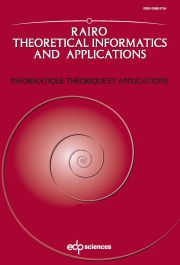Article contents
String distances and intrusion detection:Bridging the gap between formal languages and computersecurity
Published online by Cambridge University Press: 20 July 2006
Abstract
In this paper we analyze some intrusion detection strategies proposed in the literature and we show that they represent the various facets of a well known formal languages problem: computing the distance between a string x and a language L. In particular, the main differences among the various approaches adopted for building intrusion detection systems can be reduced to the characteristics of the language L and to the notion of distance adopted. As a further contribution we will also show that from the computational point of view all these strategies are equivalent and they are amenable to efficient parallelization.
- Type
- Research Article
- Information
- RAIRO - Theoretical Informatics and Applications , Volume 40 , Issue 2: Alberto Bertoni: Climbing summits , April 2006 , pp. 303 - 313
- Copyright
- © EDP Sciences, 2006
References
- 4
- Cited by


